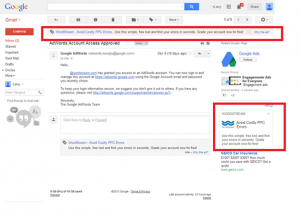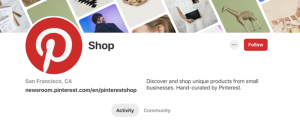The name of the game in today’s business scene is growth. Marketers are struggling to find ways to compete in an overcrowded marketplace. Business leaders want big results in the way of increased traffic, more engagement and improved lead generation.
The pressure is on for marketers. How can we deliver to such high expectations?
Many marketers are turning to growth hacking. The business world has been buzzing about it since Sean Ellis coined the term in 2010. As he put it, “A Growth Hacker is someone whose true North is Growth.” He presented the concept of getting scrappy and scouring the internet and social platforms for opportunities to get noticed, reach more people, generate more leads and grow our businesses – fast.
Ever since Ellis presented the idea of growth hacking, companies around the world have been clamoring to understand the concept and trying to figure out how to apply it to their own businesses. But what IS growth hacking? What defines a great growth hacker? And, perhaps most importantly, how can you get started with growth hacking?
Growth Hacker vs. Marketer: What’s the Difference?
“A growth hacker is not a replacement for a marketer. A growth hacker is not better than marketer. A growth hacker is just different than a marketer.” – Sean Ellis
A Growth hacker’s goal is to get his product in front of as many people as possible and do it in a way that entices them to convert to leads or subscribers. Sounds like a marketer, right? The difference is that a marketer looks at the big picture as a whole. She considers product, price, place and promotion. She uses all elements of the marketing mix. She works to create valuable content and deliver it to prospective leads in order to create new customers.
In contrast, a growth hacker has a much narrower focus. He is programmed, if you will, to take all of the resources produced by the marketer and use them to simply reach, engage and convert audiences en masse. At which point, the marketer can jump back in and nurture the growth hacker’s new leads.
The Anatomy of a Growth Hacker
Growth hackers are comprised of a unique mix of characteristics. They are creative but pragmatic. They’re analytical, but extremely fast-paced. As one Forbes article about growth hacking put it, “Growth hackers are principled hackers who study how people use a product and continually test and optimize every digital touchpoint in order to get prospective customers to take action.”
Interested in learning more? Here’s a breakdown of some typical traits of successful growth hackers.
Creative Problem Solvers
Growth hackers are constantly thinking of new ways to solve problems. They ask themselves questions and actively seek out creative answers. They are curious by nature, which leads them to continuously search for new channels, media, platforms and methods to distribute content.
Nimble & Quick
To be a successful growth hacker, you must think and act very, very quickly. There’s no time for a lot of strategic planning, action mapping or documentation. Yes, these are all important elements of any marketing strategy, but growth hackers must use them as an umbrella. They must be aware of the bigger picture of the goals and objectives of the overall marketing plan, but live and act in the here and now; making quick decisions in the moment that will capitalize growth opportunities.
Optimistic & Competitive
There’s no room for pessimism here. Successful growth hackers are eternal optimists, always believing that the next big win is right around the corner. Their competitive nature drives them to continuously seek out new opportunities to outperform the competition. They are ambitious, confident and believe that their big, hairy, audacious goals for growth are possible.
Tech Savvy
It’s not enough to exhibit all of the traits mentioned above. True growth hackers are all of these things AND they’re tech savvy, too. They are on top of new technologies, services, products and communities and are among the first to try them out. They have a solid understanding of SEO, social media, mobile content consumption, conversion rate optimization and general digital marketing. They’re always eager to try something new and see what it can do for the growth of their brands.
Why You Should Care
Many of the world’s most popular brands have achieved incredible results with growth hacking.
First to the scene was Hotmail. By adding, “P.S I love you. Get your free email at Hotmail” in 1996, the then-startup founders secured 3,000 new users one day and within 6 months they had 1 million. 18 months following its launch, Hotmail was purchased by Microsoft with 8.5 million users.
Next in the line of big-name growth hacking companies came Twitter, Facebook, Linkedin, Pinterest and Instagram. Surely they couldn’t repeat the same success as Hotmail, right? Wrong. Using growth hacking tactics, they achieved the following jaw-dropping results, as well as many more, I’m sure.
Twitter added 60,000 users in one day by obsessively looking for ways to grow and optimize every possible touch point. For example, Twitter realized that the odds of a new user returning to the platform increased dramatically if they followed at least 10 people immediately upon signing up. So, it included suggestions of some of the top people to follow as part of the Twitter signup process. The result? User retention rates went up significantly.
Twitter’s success is also proof that growth hacking doesn’t have to be complicated; it just has to be smart. Case and point, one of the company’s highest performing growth hacks was as elementary as simplifying its homepage. The once complex page was streamlined to focus on getting visitors to either sign up or log in. With that simple change, Twitter’s conversion rates increased dramatically.
Facebook gained 200 million users in 12 months. How? Through a combination of three primary growth hacking tactics:
- Providing users with embeddable Facebook badges or profile widgets to post on their websites and blogs. These widgets leveraged Facebook’s existing user base to deliver billions of impressions per month for Facebook, leading to hundreds of millions of clicks and ultimately millions of signups.
- Buying service providers in third world countries. While not an option available to many companies today, it’s an interesting strategy. At the time, media and Facebook followers were dumbfounded. But Facebook had a growth hacking plan to purchase these companies to gain access to their technology, which would help procure more email addresses.
- Strategically gaining highly desireable new Facebook users. The company reached this coveted target market through creative, yet inexpensive advertising. Reportedly, the campaign was so successful that the advertising network Facebook used asked Facebook to change its method.
These are just two examples of countless companies that have realized exceptional results with growth hacking. LinkedIn experiences 37% annual revenue increases, Pinterest generated 70 million users in 3 years, Instagram attracted 110,000 followers in 5 months… The success stories go on and on.
In addition to producing such mind-boggling statistics, many companies like growth hacking because it’s scrappy. Relatively speaking, it requires very little resources; especially considering the results it can achieve. Many free or low-cost online tools are available to support growth hackers. Additionally, a lot can be achieved with just a couple of talented growth hackers.
How to Get Started with Growth Hacking
So are you convinced yet? Do you think growth hacking might be beneficial for your company? Great! As you get started with growth hacking, you need to know that there is really no one “thing” or any single proven strategy that will achieve success for everyone. Personally, I find this both exciting and frustrating. It means that you’ve got to find the right recipe for your company – and continuously tweak it over time.
The trick is to understand the concept of growth hacking is to continuously try new things. Stay in touch with what is working for other brands. Test new ideas. Review the data these tests produce. See what works and what doesn’t. Rinse and repeat.
The formula varies from company to company, right along with their products and services, audiences, industry, size, etc. This is why it’s so important to be nimble, quick and ambitious as a growth hacker. You’ve got to have a lot of irons in the fire, so to speak, and constantly look for new ways to grow.
All of that said, here are a few tips and tricks to try as you get started with growth hacking.
- Start with simple measurable goals that you can easily track and report, such as clicks, traffic and form submissions.
- Use what you’ve already got. Look at your existing content and identify new places to share it, as well as ways you can add opportunities to convert right within the content.
- Maximize opportunities to test. If you have tools available to conduct A/B testing on your site pages, with your emails, with social posts, etc., do it! Test constantly and review the results to see how you can continuously improve.
- Aim to produce a few quick wins and then take the results to other team members and leadership to gain buy-in. With their support, take steps toward bigger growth hacking tactics.
Whatever path you take, remember that growth hacking is a process, not a set of tools. Finding the right formula for your company takes time and there’s no magical silver bullet. Success rarely looks like a perfect curve; in reality it looks more like a heartbeat with lots of ups and downs. Focus on maximizing the “ups” and you’ll see great results over time.
(176)








